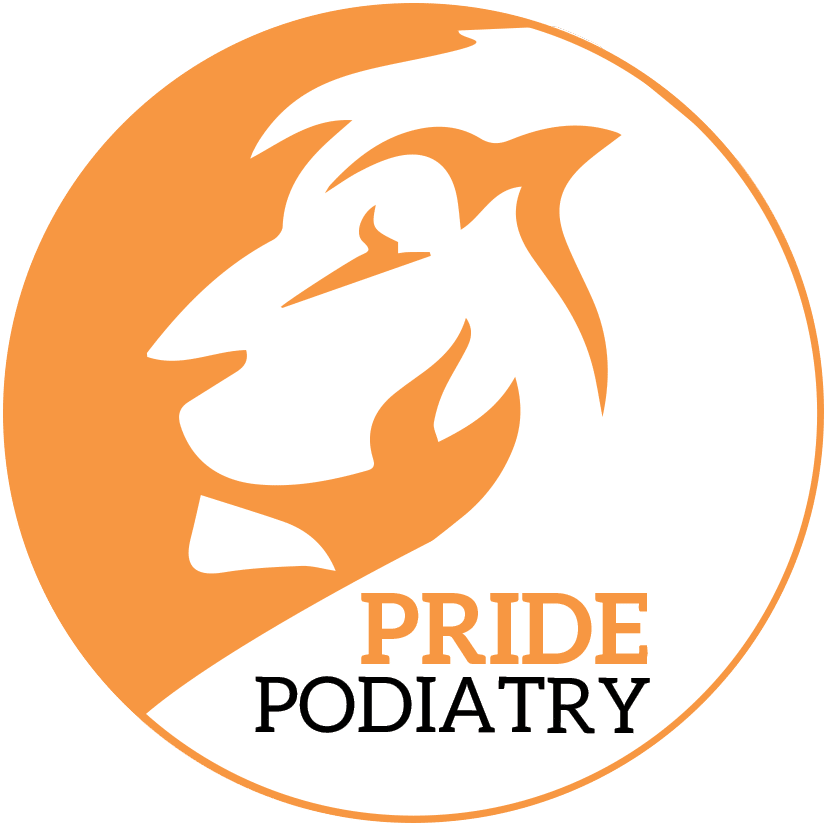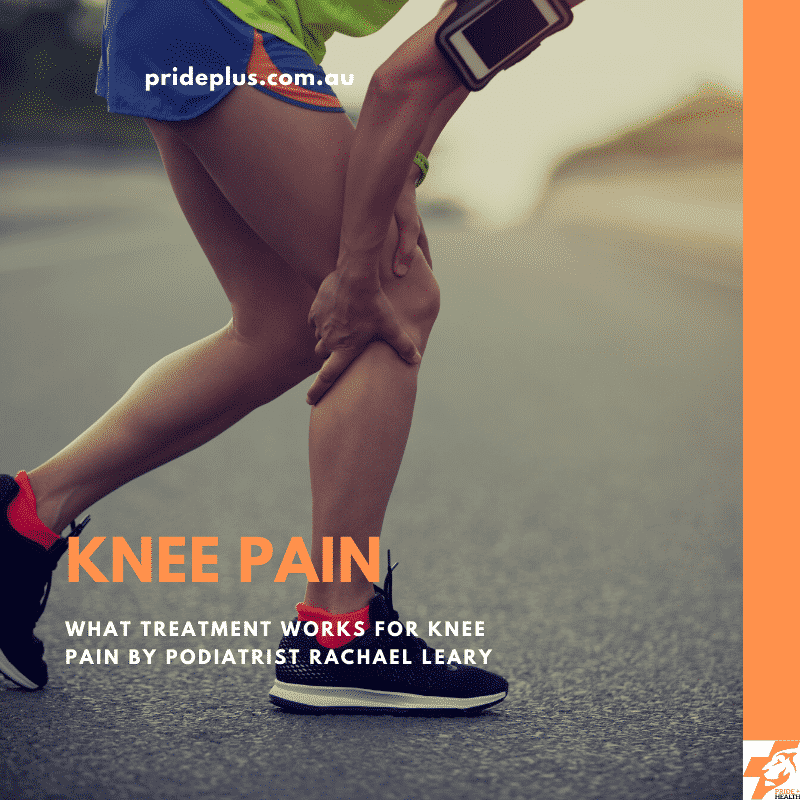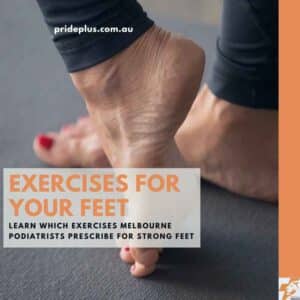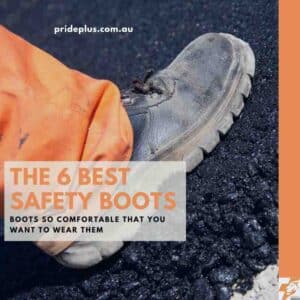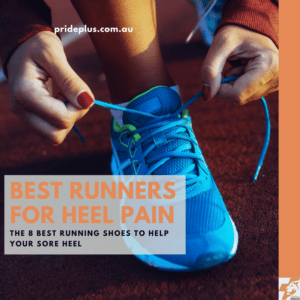By Rachael Leary – Podiatrist, runner and previous knee pain sufferer.
Knee pain is an area I can relate to. In the lead up to Melbourne Marathon (running the 10km, half marathon is my goal for next year!) I started getting pain in both knees whilst running and even a few days after my runs.
Luckily for me I’m a podiatrist working at PridePlus Health where I have access to best podiatry and physiotherapy teams to help me.
From talking with others who have suffered with knee pain I thought that writing this guide would help many more people achieve their goals. Just like me.
What is patellofemoral pain (PFP)?
Before we can really drill down into what works for knee pain, I need to explain it by another name. Patellofemoral pain.
Patellofemoral pain, hereby known as PFP in this article is a common presentation of localised and yet poorly defined pain around the anterior knee, retro-patella region or around the patella.
This is the front, inside part of the knee joint, just behind or around the knee cap. Knee pain or PFP is often insidious in nature, which means it can just build out of seemingly nowhere.
Certain activities such as jumping, squatting, walking up or down stairs often aggravate PFP.
In the past PFP was considered a “self limiting condition” which we now know is not true with over 56% of people having PFP for > 2 years.
So how many people get PFP?
The studies vary wildly in numbers with some as great as 85% of people and others as low as 3%. The real number is somewhere in between but the most frequently cited number with the best evidence behind it is 25%.
PFP can affect young and not so young knees. The most common age groups to suffer with PFP are 12 to 19 year olds, who tend to be highly active; and 50 – 59 year olds with a variety of activity levels.
What factors contribute towards PFP?
There are many different factors that can lead to PFP knee pain. As a general rule, factors including weakness of the knee extensors, hip stabilisers and foot stabiliser muscles are linked with PFP.
Also, women are more likely to suffer PFP than men.
For those with long standing PFP, some psychological factors come into play that can increase the risk of negative results of treatment.
What works for patellofemoral pain in the knee?
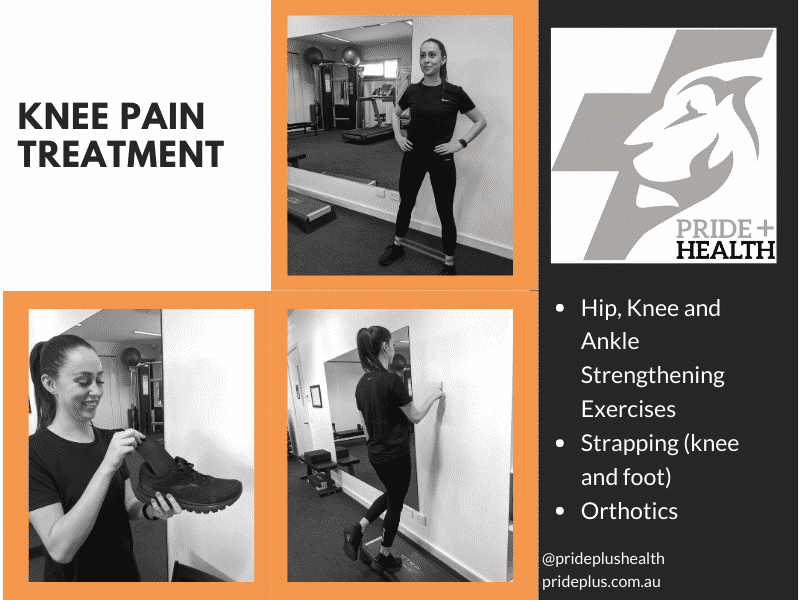
When we appraise the evidence there’s clear evidence that some things work better, more often and for more people than others. These are:
- Hip, Knee and Ankle Strengthening Exercises
- Strapping (knee and foot)
- Orthotics
What doesn’t work for patellofemoral pain?
Unfortunately there’s also a lot in the evidence which has not been shown to be effective at reducing PFP. This includes:
- Dry needling
- Massage
- Ultrasound
- Electrotherapy
- Lumbar manipulation and massage
So how is this information useful for me?
If you’re suffering with PFP then the best course of action is to address your causative factors specific to you.
For that you will need a thorough diagnosis and assessment. Our PridePlus team are all capable of providing you with an expertly guided plan depending on your needs.
Considering there are proximal (knee and above) factors, as well as distal (below the knee – think foot and ankle) your ideal therapist could be either a podiatrist or physiotherapist.
Here’s a guide of who is most appropriate to see first.
When to see a physiotherapist for PFP
If you have not yet seen a physiotherapist or podiatrist, start with a PridePlus Physio in Pascoe Vale (or our friends at Pure Physio in Melbourne’s CBD). Your physio will give you a thorough assessment and get you started on the factors you can begin to address straight away. This will be the right strengthening exercises for you.
Your physio will also be able to guide you to see a podiatrist, to ensure you’re ready to have a foot and ankle assessment for strapping and orthotic therapy straight away.
If you’re wondering what to bring to your physio appointment then you can read our handy guide here.
When to see a podiatrist for PFP?
Often podiatrists are considered a secondary team member in your PFP treating team. This is likely due to only more recent evidence and knowledge by skilled podiatrists coming to the foreground in treating PFP.
If you have PFP then getting an assessment from a PridePlus Health Podiatrist is an ideal option to get a plan in place around your lower limb strengthening, strapping and orthotic needs.
You can see a podiatrist as the primary team member as all PridePlus Health Podiatrists are able to assess and address your PFP.
As many people with PFP have already seen a physio our podiatrists will (with your permission) communicate back to your physio what they find, and how a podiatry advised intervention will assist you achieve your goals.
Coming to a podiatry consultation prepared is really important. To make sure you’re ready to get the most from your podiatrist we have a guide here you can check out.
What I did for my PFP knee pain
Being a podiatrist, my first thought was shoe, so I got my Perfect Fit. I bought myself a really good pair of Brooks Adrenaline running shoes. While they are the most comfortable runners I have worn I still wasn’t getting enough pain relief to be able to finish my 10km run.
So where did I go from there?
Strength exercises and a new pair of custom orthotics. Once I realised where my strength deficits were I made it my primary focus at the gym to get things nice and strong.
I also knew I needed more support underneath my feet than my muscles could provide in a short period of time.
After getting a new pair of orthotics I wore them in slowly to ensure I was ready for them. My knee pain was starting at about the 5Km mark of a run before exercises and orthotics.
After getting some strength and orthotics in place I was ready. Bring on race day. I was feeling a lot more confident but still a little nervous on how I was going to perform. Not only did I finish the 10km without stopping I also smashed my PB!
That’s not to say I didn’t experience any PFP whilst running because I did. However, the pain was nowhere near as bad as it was when I first started training to now. With some more time to complete further strength work I now feel really confident about my half marathon next year!
If you want to know what will work for your knee pain, book in with our team now.
References
The main reference for this post is the excellent clinical practice guidelines produced by Academy of Orthopaedic Physical Therapy of the American Physical Therapy Association.
We would like to humbly thank the authors for their work in producing this thorough document.
There’s also Foot exercises and foot orthoses are more effective than knee focused exercises in individuals with patellofemoral pain in the Journal of Science and Medicine in Sport. Another example of excellent study design and application.
